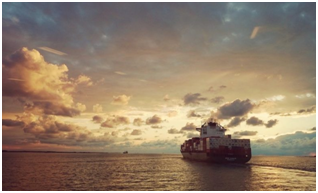
The
extraordinary redrawing of the seaborne trading map between Asia and Europe
over the past couple of months since the Houthis intervened in the ongoing war
in Gaza is having a deleterious effect on shipping’s carbon footprint with one
new report suggesting shippers might experience a more than five-fold increase
in CO2 emissions per container shipped.
Ships of all shapes and sizes are
increasingly choosing to go via the Cape of Good Hope rather than risk a Red
Sea transit
where the Houthis from Yemen have attacked around 35 merchant ships with drones
and missiles since November as well as hijacking one car carrier.
The
latest data from Clarksons Research show that Gulf of Aden ship arrivals are
now 65% lower than 2023 levels, with recorded containership arrivals remaining
at very low levels down 90%, tanker arrivals now down 45%, gas carrier arrivals
down 90% and bulker arrivals down around 30%.
Typically,
boxships take 31 days travelling the 10,000 nautical miles between Shenzhen and
Rotterdam on the traditional route via the Suez Canal. That journey distance jumps to more than 13,000 nautical miles, and
at least 41 days, if the route is via southern Africa.
In
terms of CO2 emissions, researchers at Danish consultancy Sea-Intelligence have
been able to quantify the extra pollution on a per teu basis in a new study
published yesterday, which factors in the longer sailing distances, as well as
increased speeds, and the likelihood of smaller ships being deployed on the
alternative southern African route. CO2 emissions per teu could rise from
anywhere between 31 to 575%, the study suggested. The longer journeys are also having an impact for a ship’s Carbon
Intensity Indicator (CII), as well as the newly introduced emission trading
scheme from the European Union (EU ETS).
Clarksons
Research has also been looking at the overall changes in tonne-mile demand for
2024 brought about by the Red Sea shipping crisis. By way of example, the
Russian invasion of Ukraine and the subsequent EU ban on Russian oil products
created a 5.5% uplift for product tanker tonne-mile demand.
Clarksons’ estimates for increased
tonne-mile demand of rerouting via the Cape of Good Hope by shipping sector are
most bullish for containerships and car carriers.